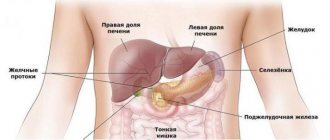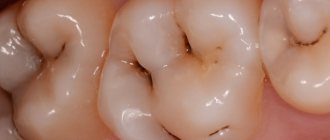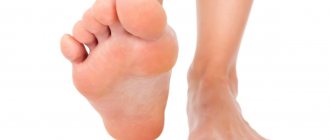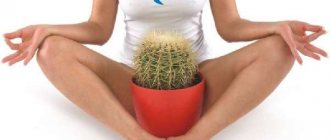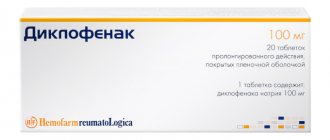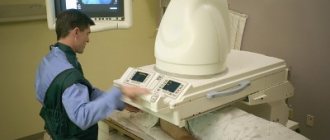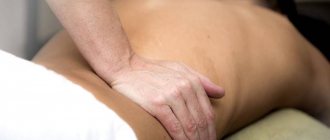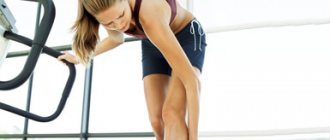From this article you will learn a set of exercises for cervical osteochondrosis, and gymnastics for the spine at home. How, when and why to perform these complexes.
Author of the article: Victoria Stoyanova, category 2 doctor, head of the laboratory at the diagnostic and treatment center (2015–2016).
Article publication date: 06/09/2019
Article updated date: 01/18/2020
The cervical region is the most important area of the spine. Arteries pass through the neck and supply blood to the brain. Therefore, it is important to take care of it and maintain mobility.
Anatomy of the cervical spine
To prevent too much stress on the spine, you need to strengthen the muscles that support it. Therapeutic gymnastics will help with this.
It is physical exercise for the cervical spine that is the basis for the treatment of osteochondrosis: medications only relieve symptoms, and only therapeutic exercises can slow down the further development of the disease.
You will get the first effect in the form of improved well-being after 2-3 weeks of daily exercise. Before performing exercises at home if you have cervical osteochondrosis, consult your doctor.
You need to do exercises every day 1-2 times a day, preferably in the morning and evening for at least 2 weeks. You can make exercise a part of your life and exercise every day if you feel good.
With regular exercise, the functionality of the spine is restored. Neck pain and stiffness of movement go away. Blood flow to the brain improves, accompanying symptoms disappear: headache, dizziness, tinnitus, decreased blood pressure, etc.
The best option is to start studying at a specialized center. There you can follow the movements of the trainer and understand how to do gymnastics correctly. In the future, after 2-4 weeks of classes, you will be able to train at home on your own.
All exercises for the cervical spine are designed not only to treat, but also to prevent osteochondrosis. They can be done to a healthy person to prevent the development of osteochondrosis.
A neurologist deals with the problem of osteochondrosis of the cervical spine. Based on the results of the X-ray or MRI, he will make a verdict on whether you can include certain exercises in your classes.
Indications and contraindications for therapeutic exercises
Neck exercises for osteochondrosis play a key role in treatment. The need to prevent this disease may also be an indication. Exercise is also necessary if you are at risk.
Factors that increase the likelihood of developing cervical osteochondrosis:
- frequent driving;
- working on a computer;
- passive lifestyle;
- age over 25 years;
- menopause.
Risk factors for cervical osteochondrosis: 1 – long-term driving;
2 – work at the computer; 3 – sedentary lifestyle; 4 – menopause However, gymnastics, like any other therapeutic method, has contraindications. Exercises for the neck with osteochondrosis should not be done during exacerbation of this disease, as well as with:
- severe myopia;
- diabetes mellitus in the stage of decompensation (sugar level rises above 13.9 mmol/l, hyperglycemic coma may develop);
- high blood pressure and other severe cardiovascular diseases;
- recovery after spinal surgery;
- vestibular disorders, ataxia (uncoordinated muscle movement);
- inflammatory and infectious diseases, especially if they are accompanied by elevated body temperature (influenza, enterovirus infection, rheumatoid arthritis);
- diseases with a tendency to bleeding (for example, hemophilia);
- oncology.
Briefly about the reasons
The modern rhythm of life is hectic, it forces us to be on the move all the time. The disease is most often observed in people who lead a less active, sedentary lifestyle. As a result of tedious, monotonous work, the spinal column receives severe stress. The patient tends not to notice the first signs, but worries only when severe back pain appears when raising his arms and turning to the side.
The disease occurs due to the fact that the vertebral cartilage is constantly under stress, and as a result, nerves and blood vessels are pinched. Therapy is necessary in every case, however, prevention is important. Remember: nerve and cartilage tissue will not be fully restored.
Development can be caused by hereditary predisposition, curvature of the spine, weakened spinal muscles, hard work and any monotonous work. If a person constantly works in a certain position, there is a high probability of developing pathology.
The effectiveness of physical therapy
The exercises are designed to:
- Strengthen the muscle corset to relieve excessive stress on the spine.
- Relieve muscle spasm, which can cause chronic pain, improve neck mobility.
- Improve blood circulation in the vessels of the neck to supply the intervertebral discs with oxygen and nutrients.
- Prevent further development of the disease, avoid complications (intervertebral hernia), reduce the risk of exacerbations.
- Reduce pinching of nerve roots and blood vessels, which cause unpleasant symptoms of osteochondrosis.
A short-term effect in the form of relieving muscle tension will be felt after the first execution of the complex. The long-term effect - improvement in general well-being, weakening of symptoms - occurs after 2-3 weeks.
To maintain it, as well as to prevent exacerbations and complications, you need to perform gymnastics for cervical osteochondrosis at home throughout your life - every day.
An exception is periods that are included in the list of contraindications (inflammatory and infectious diseases, exacerbations of osteochondrosis).
What symptoms does gymnastics help you get rid of, and how does it happen:
| What symptoms will begin to subside after 2–3 weeks of home physical therapy exercises? | Mechanism for relieving unpleasant symptoms |
| Pain in the neck | Excessive muscle tension is relieved, pinching of nerve roots is reduced. |
| Dizziness, spots before the eyes, tinnitus | By relaxing the muscles and relieving their swelling, pinching of the vertebral artery, which supplies blood to the brain, is reduced |
| Limited neck movement | The muscle corset is strengthened, muscle spasm is eliminated |
| "Shots" in the neck | Their likelihood is reduced, as the risk of sudden pinching of the nerve root is reduced
|
| Excessive sweating, numbness in hands | It would seem that there is a connection between sweating and neck exercises. However, it is there. Excessive sweating, even in cold weather and in the absence of physical activity, occurs due to pinched nerve roots, as a result of which the functioning of the autonomic nervous system is disrupted Gymnastics for the neck for osteochondrosis reduces pinching, thus eliminating sweating. Numbness of the hands is also associated with compression of the nerve roots, so this symptom can also be treated with physical exercise |
Important! The main rule of all exercises is to perform them with a straight back. Do not hunch over under any circumstances. Take things slowly.
Sudden movements with osteochondrosis are strictly contraindicated. If you feel increased pain during exercise, stop doing it and consult a doctor. Perhaps you should choose a different complex or reduce the number of repetitions. Control the technique of performing all exercises by looking in the mirror. For a better understanding of how to do the exercises correctly, turn on the video and do them at the same time.
Causes of lumbar osteochondrosis
Insufficient physical activity, although one of the main causes of the disease, is far from the only one. Also possible causes of the development of osteochondrosis include the following factors:
- congenital or acquired curvature of the spine, the presence of stoop;
- weakness and dystrophy of the spinal muscles;
- hereditary factors;
- metabolic disorders, lack of the required amount of microelements in the diet;
- hypothermia;
- regular, uneven heavy physical activity;
- psycho-emotional instability, frequent stress;
- frequent awkward body position;
- injuries, deformities of the back and spine;
- flat feet;
- wearing uncomfortable shoes for a long time;
- uneven load: carrying heavy loads on one shoulder, resting on overly soft mattresses and pillows.
All these signs indicate that physical activity is necessary for a healthy body, but it must certainly be balanced and uniform. Lifting heavy weights and overworking cause no less harm to a person than complete lack of movement.
Specially designed therapeutic exercises are designed to provide the entire body, and especially the spine, with the necessary load, without overworking it. Do not forget that when the first signs of the disease appear: discomfort and a feeling of stiffness in the spine, pain, rapid fatigue of the back muscles, you must first seek qualified help from a specialist.
Exercises to strengthen and stretch the neck muscles
The simplest set of exercises for osteochondrosis of the cervical spine can be done by people of any age and any level of physical fitness. These exercises are aimed at strengthening the muscle corset, which will help relieve excess stress on the spine and slow down the progression of osteochondrosis. Exercises help improve neck mobility and relieve excessive tension in the muscles by stretching them.
Each exercise is done sitting with a straight back or standing (feet shoulder-width apart). In the extreme position, hold for 3 seconds. Number of repetitions – 10 times or 5 times in each direction.
| Name | Execution technique |
| Sipping | Place your hands behind your head. Move your head back. Use your hands to resist your head |
| Flexion | Place your fingertips on your forehead. Try to lean forward. Resist with your hand |
| Lateral flexion | Place your hand on your temple. Try to tilt your head to the side. At the same time, resist with your hand |
| Rotation | Place your fingertips on your temple. Try to turn your head to the side, resisting with your hand |
| Pulling the neck back | Move your head back. Make sure your chin remains parallel to the floor |
| Neck Curl | Tilt your head down. Try to touch your chin to your chest |
| Neck twists | Turn your head to the left to see your right shoulder. Repeat on the other side |
| Shoulder movements | Raise your shoulders up, lower down, repeat. The neck and head remain motionless |
| Trapezius muscle stretch | With your right hand, tilt your head to the left side towards your shoulder. Don't raise your shoulder. The left hand is behind the back |
| Bends back | Tilt your head back, pause, return to starting position, repeat. Please note that this exercise may be contraindicated if you have cervical instability! |
| Whole neck stretch | Extend your right arm down, take it by the wrist with your left hand, and turn your head to the left. Stay longer. Return to the starting position. Repeat on the other side |
A set of exercises to strengthen and stretch the neck: 1 – pulling the neck back with resistance;
2 – head turns to the side; 3 – raising, lowering the shoulders; 4 – tilting the head back These exercises for cervical osteochondrosis at home can be performed as soon as you feel stiffness and discomfort in the neck, but no more than 3 times a day.
How does pathology manifest itself?
Compared to the lumbar vertebrae, the cervical vertebrae are much smaller in size. At the same time, a large number of nerve processes and vessels are concentrated in the cervical area. If compression of nerve endings occurs or blockage of blood vessels occurs, over time this phenomenon causes the following conditions:
- development of hernias;
- formation of protrusions;
- the appearance of swelling.
If the blood supply is impaired, inflammation often occurs. Such a negative phenomenon can provoke pathological changes or lead to disability. Therefore, at the first symptom, it is important to consult a specialist for a detailed examination and an accurate diagnosis. It is impossible to completely get rid of osteochondrosis. However, if you follow all medical recommendations, you will be able to improve your quality of life and get rid of pain.
It is worth noting that the symptoms of the disease depend on its type:
- Radiculitis of the neck. In this condition, discomfort occurs in the cervical area and radiates to the area of the shoulder blade, arm or forearm. With cervical radiculitis, patients often complain of a complete loss of sensitivity in the hand and fingers.
- Irritative syndrome. This pathology is characterized by the occurrence of pain in the area of the back of the head and neck, extending to the thoracic region, forearm or shoulder.
- Pathology of the vertebral artery. This condition manifests itself in the form of headaches, tinnitus, dizziness and visual impairment. It is worth noting that this cervical osteochondrosis syndrome is considered the most dangerous, since it can provoke circulatory problems in the brain. Moreover, it will not be possible to eliminate such a pathology only with gymnastic exercises.
- Cardiac type. With this type of osteochondrosis, discomfort occurs in the neck, shoulder blade and in the area of the heart muscle. In this case, pain may intensify when turning the head or when sneezing.
A set of exercises according to Shishonin
Gymnastics was developed by A. Yu. Shishonin, a specialist in exercise therapy. He believes that all spinal problems are associated with impaired blood circulation. Shishonin’s gymnastics is aimed at restoring blood flow in the cervical spine and the muscles surrounding it.
The starting position of all exercises from this exercise therapy complex is sitting or standing (feet shoulder-width apart), with a straight back. Number of repetitions: 5 times in each direction.
In the extreme position of each exercise, first hold for 10–15 seconds, after 2–3 weeks you should increase the time to 20–30 seconds.
Metronome
Tilt your head to the right, trying to reach your shoulder. Leave your shoulder in place, do not raise it towards your neck. Stay longer. Return to the starting position. Repeat on the other side.
Spring
Lower your head to your chin. Stay longer. Then stretch your neck forward and up. Stay longer. Repeat.
Looking to the sky
Turn your head to the side. Stay longer. Return to the starting position. Repeat on the other side.
Frame
Place your right palm on your left shoulder. Keep your elbow and forearm parallel to the floor. Turn your head to the side, pause, return your head to the starting position, then turn the other way. This exercise uses the muscles not only of the neck, but also of the shoulder girdle and back, since cervical osteochondrosis is often combined with thoracic osteochondrosis.
Fakir
Raise your arms above your head. Place your palms together and bend your elbows slightly. Turn your head to the side, pause, return your head to the starting position, then turn it the other way.
Heron
Pull your head up. Pull your shoulders back. The hands lie on your knees (if you do the exercises while sitting). Hold your head in the highest position, then return to the starting position and repeat. After 5 repetitions, perform the Metronome exercise.
Goose
Performed while standing. If you were sitting before, stand up. Place your head straight so that your chin is parallel to the floor. Pull your head forward. Don't pull it up. The chin remains parallel to the floor. From this position, turn your head to the right. Then reach as far as possible towards your shoulder. Stay longer. Return to the starting position. Repeat on the other side.
Exercises for osteochondrosis of the cervical spine according to Shishonin are aimed at relaxing muscles and improving blood circulation. They will help relieve headaches, dizziness, vision and hearing problems.
By improving blood circulation, the progression of the disease will slow down, since the intervertebral discs will be better supplied with nutrients.
Isometric gymnastics by Dr. Borshchenko
The exercises of the famous doctor Borshchenko are perfect for treating cervical osteochondrosis. This is an effective method to strengthen the deep muscles of the neck that are not used in everyday life.
Gymnastics will help relieve excess stress on the vertebrae and intervertebral discs. As a result, neck pain and stiffness can be cured.
At the extreme points of each exercise, hold for 3-5 seconds. The number of repetitions of each movement is 5–10 times, depending on the level of training and well-being.
Isometric exercises from Dr. Borshchenko:
- Starting position – standing, feet shoulder-width apart. Wrap your hands around your neck so that all your fingers are on the back side and your thumbs are on the front. Tilt your head down, then return to the starting position. Then tilt your head to the sides.
- Place your hand on your jaw with your thumbs resting on your chin. Move your jaw forward.
- Place a chair in front of you. Stand with your back to him. Wrap your arms around your back. Tilt your head back. Then return it to its original position. Squat down. At the same time, still hold the back of the chair with your hands. Lower your chin to your chest. Return your head to the starting position. Tilt your head back. Return to original position. Stand up. Do it all over again.
- Sit down. Place a book on your head. Move your head back and forth. In this case, the book should not fall.
- Place your hand on your forehead. Lower your head, resisting with your hand.
- Place your hands behind your head - on the back of your head. Try to tilt your head back, resisting with your hands.
- Place your right hand on your right temple. Try to tilt your head to the right without letting yourself do it with your hand. Repeat on the other side.
- Perform the last gymnastic exercise lying down. Place a cushion or rolled towel under your neck. Place your thumbs on the corner of your jaw. The rest are on the back of the head. Gently pull your head up 10–20 times. Perform 1–3 times, depending on how you feel.
Isometric gymnastics for the neck. Click on photo to enlarge
Exercise "Fulcrum". Click on photo to enlarge
Click on photo to enlarge
Exercise "Consent"
Throwing back the head with resistance
Exercise "Oh-oh"
Self-extension of the neck
Before starting these exercises to treat your cervical spine, get an X-ray of your neck and talk to your doctor. The third and eighth exercises from the complex may be contraindicated in case of instability of the cervical vertebrae.
Stages and degrees of the disease
Lumbar osteochondrosis is a disease that does not go away on its own and progresses slowly without treatment. There are four stages of progression of this disease.
The degrees of osteochondrosis are named accordingly.
First degree
The fibrous lumbar intervertebral disc is injured and cracks appear in it.
Deforming changes at this stage are insignificant. There are often complaints of pain not only in the lower back, but also in the heart. Pain occurs against the background of sudden movements and heavy load.
Second degree
The lumbar cartilage at this stage is already more destroyed.
The distance between the vertebrae becomes smaller, this leads to pinching of the roots.
The vertebrae move relative to each other, which leads to pain.
Unpleasant sensations in the back area are pronounced. The pain takes the form of attacks, which are accompanied by sweating and subsequent chills.
Third degree
The lumbar intervertebral disc ruptures and a hernia forms.
Vessels and nerve endings are severely compressed. The spine is noticeably deformed, which leads to disruption of the location and functioning of internal organs.
Fourth degree
This is the most severe stage of osteochondrosis of the lumbosacral spine.
Movement is difficult due to severe and irreversible deformation of the spinal column.
In this case, the pain may become insignificant, but such an improvement is imaginary.
This stage of the disease leads to permanent disability.
Yoga for cervical osteochondrosis
Yoga exercises (asanas) will serve as an excellent prevention against osteochondrosis, and are also suitable as its treatment.
Many doctors advise resorting to this time-tested method. It is best to combine yoga with one of the special complexes described in the article above.
Asanas for the prevention and treatment of osteochondrosis of the cervical spine:
Cat-cow pose
Get into a knee-elbow position. Bend your lower back down, throwing your head back (like a cat). Arch your lower back upward, lowering your head to your chin (imitate a cow). Repeat 5 times.
Cat-cow pose
Tiger pose
The starting position is the same. Bend your lower back upward, tilt your head with your chin to your chest. Touch your right knee with your straight left hand. Return to the starting position. Bend your lower back down, throw your head back, lift your left leg, bent at the knee, and grab it with your right hand. Then repeat the entire complex on the other side.
Tiger pose
Snake pose
Lie on your stomach. Place your hands on the floor on either side of your chest. Straighten your arms, bending your back up. Do not lift your pelvis and legs off the floor. Try to lower your shoulders and bring your shoulder blades together.
Snake pose
